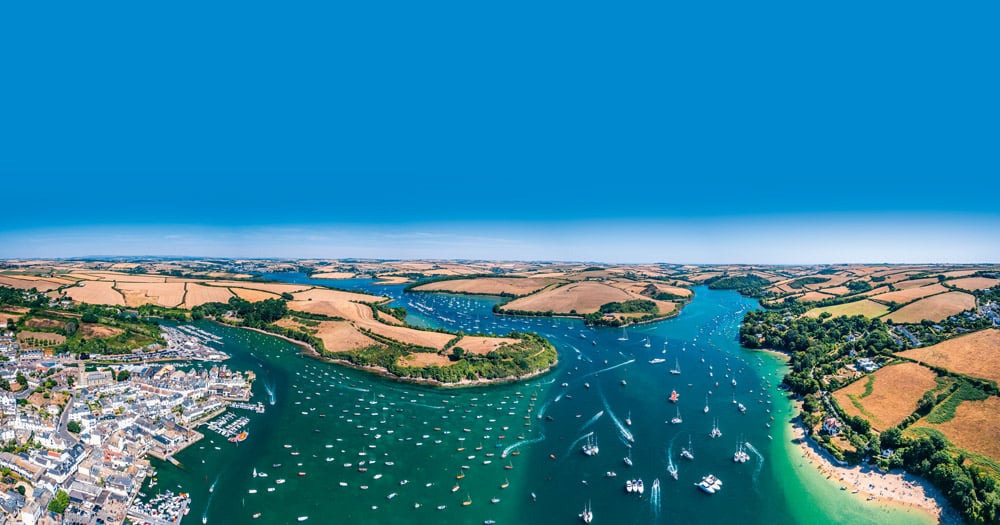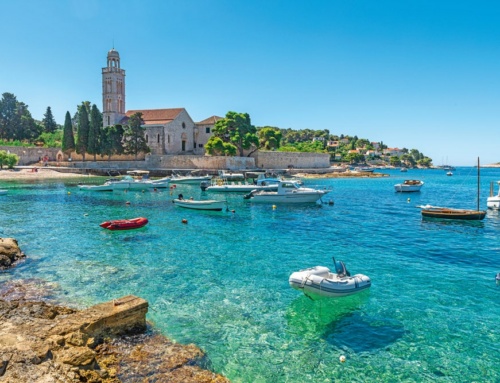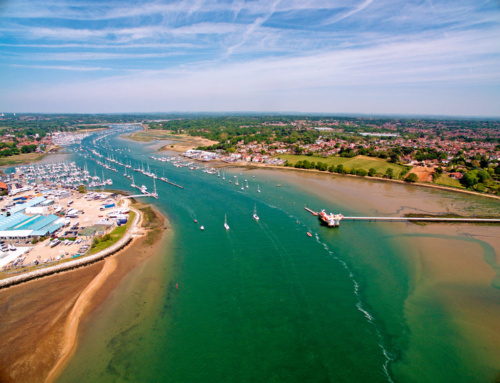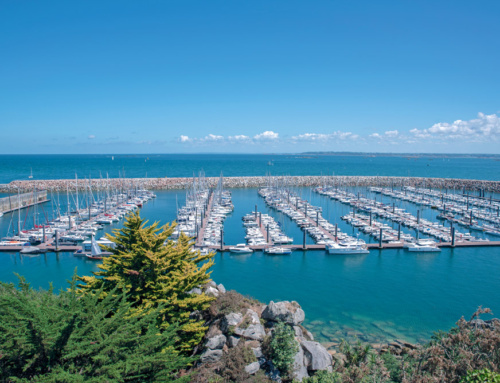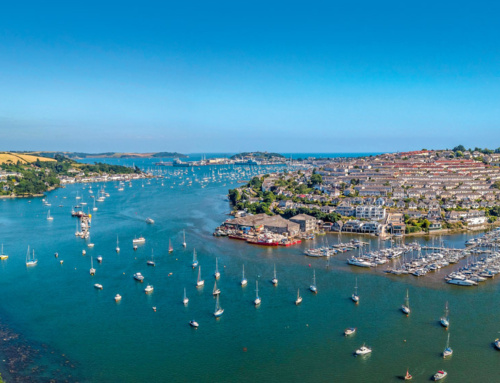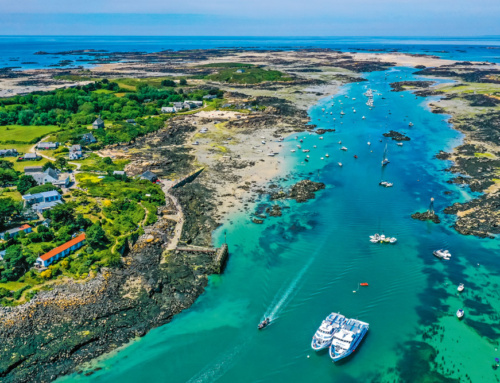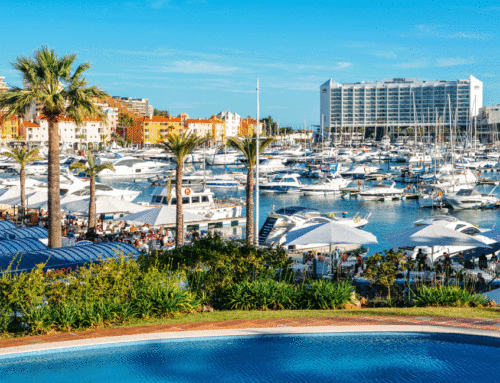Mark Featherstone shares Salcombe’s best secrets and shows us why it’s still one of the UK’s most beautiful waterside locations. Nestled within South Devon’s coastline, it is truly a motorboater’s paradise…
Framed by wooded hills and sloping pasture, the crystal waters of the estuary laced with sandy coves, isolated inlets and a sprinkling of ancient lime kilns, Salcombe was primarily a fishing village that became a shipbuilding town a century and a half ago. In more recent times, this South Devon waterside town grew in fame as a sailor’s paradise before also establishing itself as a popular holiday destination.
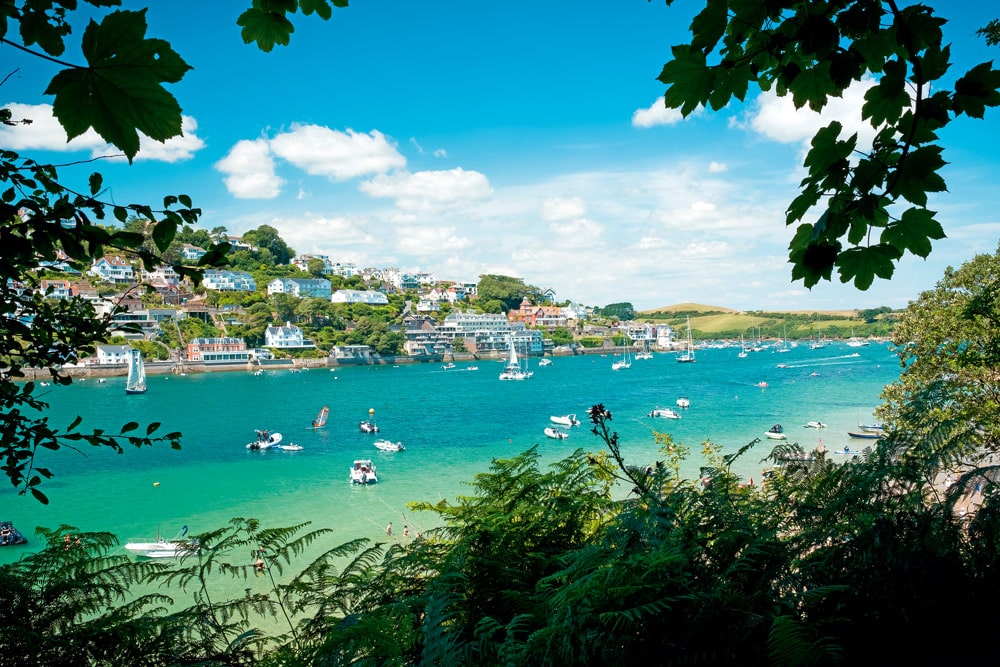
Salcombe and the Salcombe Estuary, South Devon, UK
Salcombe is ideal for families as the beaches are safe and child-friendly and the town centre has a myriad of independent shops and clothing outlets, not to mention a full complement of marine engineering facilities and a well stocked chandlery. Salcombe crab and lobster are the local delicacies, and there are some wonderful restaurants and cafes, some of which have tables and views overlooking the harbour. At most states of the tide there are acres of estuary to explore, and since most paddleboards are inflatable and compact for stowing away, it’s a great way of exploring the estuary fully when you visit by boat.
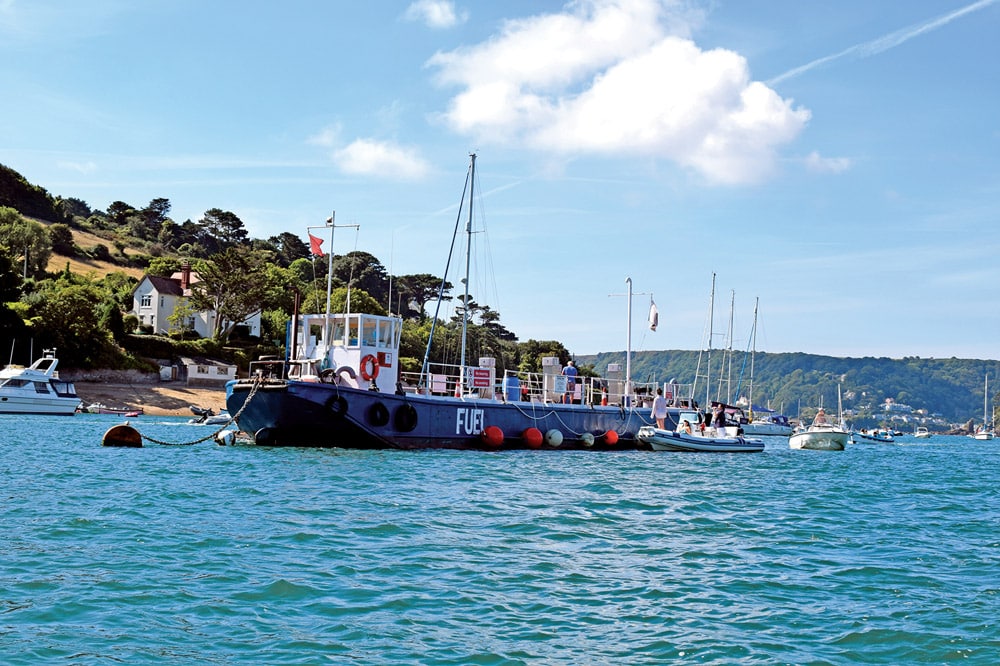
Salcombe Fuel Barge offers petrol & diesel.
A biodiverse estuary
Originally an unglaciated river valley, the estuary was partly drowned following the post-glacial rise in sea level and is now a sheltered marine inlet or ‘ria’. Indeed, Salcombe derives its name from the word ‘salt-combe’, meaning ‘salt valley’. The area is designated as an official ‘Site of Special Scientific Interest’ as hidden within the glorious coastline are ecosystems that might rival tropical jungles for the carbon that they capture. These systems support very special and unique wildlife communities recognised as the best of their type in the North-East Atlantic. The sand and mud of the lower shore along both sides of the estuary are colonised extensively by eelgrass (Zostera marina), and these seagrass meadows are hugely important as they naturally trap and store massive amounts of carbon. There is nothing more soothing than drifting along the shore on your paddleboard as the fronds wave gently beneath the rippling waves, and if you are very lucky, you may even spot a seahorse clinging to the bright-green grass tops.
This ria is totally unique because it has no tributaries feeding the estuary and is essentially a huge tidal seawater lagoon covering thousands of acres. While drying out at low tide in its upper reaches, the waterway remains navigable throughout its main harbour and fairways at all states of the tide.
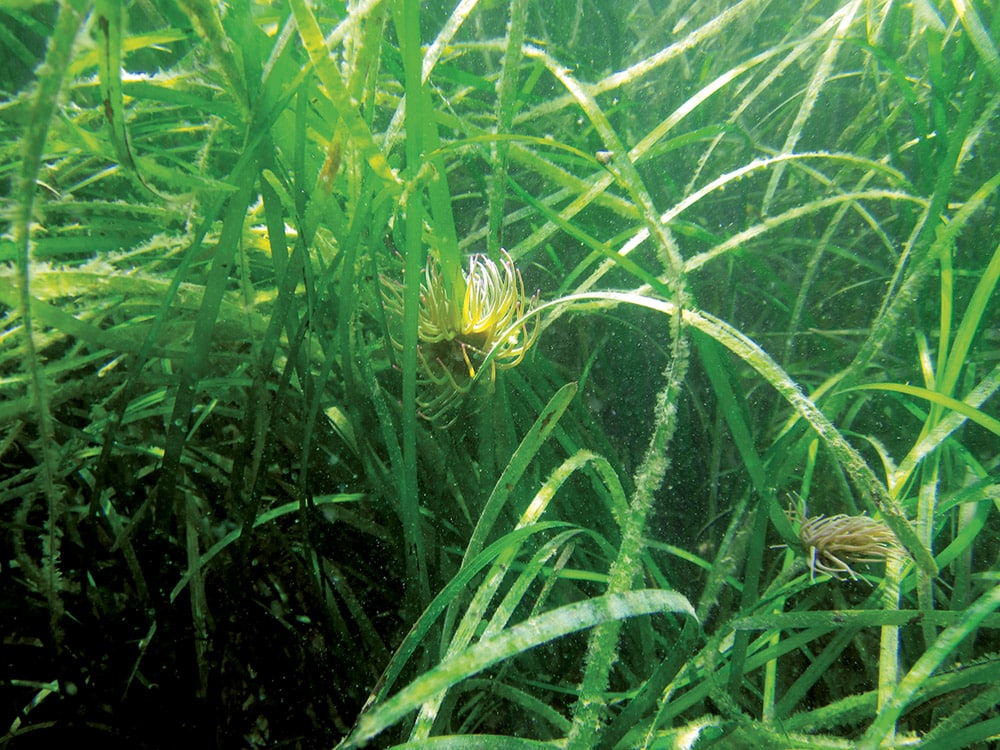
How you can help protect the seagrass beds
- Take care when launching over or from sensitive areas
- Refuel with care, making sure nothing spills into the sea
- Avoid seagrass beds as they are vulnerable to propellor and anchor damage
- If you do find yourself within seagrass, stop, lift your engine and paddle away over the seagrass bed
- Avoid anchoring in or over seagrass
Salcombe at war
Not only is the area fabulous for the amateur ecologists among us, but history buffs will also enjoy uncovering the fascinating history of this iconic town. Devon was much fought over in the Civil War, and Salcombe Harbour became a protected anchorage for Royalist privateers. Sir Edmund Fortescue, of Fallapit House in Kingsbridge at the head of the estuary, restored Fort Charles on the western bank to repel the Parliamentarians, and after a four-month battle it proved to be the very last Royalist stronghold to concede to Cromwell. The ruins of Fort Charles are still there, and a favourite walk along the foreshore at low tide takes you right beneath this historic site. I recommend enjoying a pint afterwards in the Fortescue Inn and reflecting on the castle’s history, as it loyally held out to the new order – a sentiment that some say still remains in the town to this day.
Centuries later, in 1943, the US naval force, numbering some 2,000 men, was stationed in Salcombe and left behind the lasting legacy of Whitestrand Quay, which they built along with the slipway. You can still see the remains of another slipway the troops on Mill Bay beach before finally leaving the town to join the huge south coast armada on 4th June 1944, bound for the Normandy beaches and the attempted liberation of Europe from the Nazis.
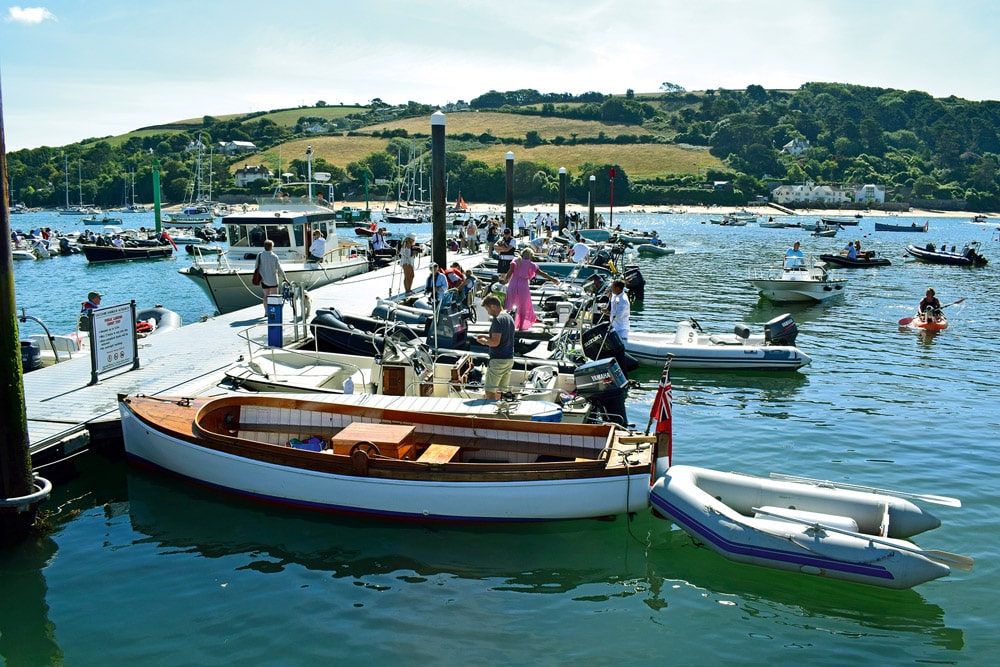
Normandy Pontoon which has fresh water available
The infamous bar
Tennyson penned his poem ‘Crossing the Bar’ in 1889 while staying in Salcombe and so made famous the spit of sand that stretches across the entrance from Limebury Point on the east side to Bar Lodge in the west.
The range of tide in Salcombe is approximately 4.6 metres, but there is at least a depth of 1.1 metres over the bar at low-water springs. Nevertheless, the bar should not be negotiated in strong southerly or south-easterly onshore winds or swell. Over to the west, close to the high cliff line, there exists a deep-water channel with leading marks and buoyage leading directly into the estuary. If your vessel has more than a metre of draught, you should always check low-water times and err on the side of caution. You might also choose to contact the harbour master, just to be sure, but try to leave around 2 hours either side of low water for good measure in testing conditions.
On spring tides, there’s a fair current that runs right through the estuary via a bottleneck that occurs between Salcombe town itself and East Portlemouth on the eastern bank. Here the channel narrows before the main expanse of the estuary itself. You will experience quite a strong flow of water through this pinch point. Flow can be up to 2.5 knots at the peak of the ebb and flood spring tide, so attention to tide tables is strongly advised, and my top tip is not to rely on third parties and read the tide table yourself either using traditional published means or via one of the many apps available.
Visiting by sea
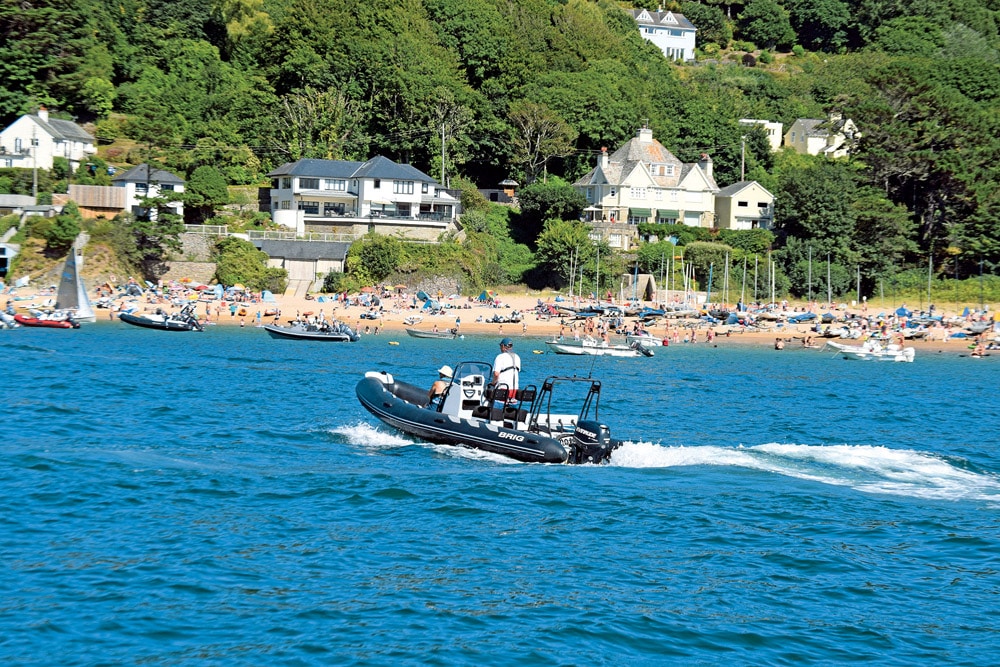
Millbay beach has easy access by sea.
While Salcombe is unusual in the fact that it doesn’t have a marina, nonetheless it is well served by swinging moorings that are set in what arguably is the most beautiful location of its type in the British Isles – one where you will experience a spectacular 360° panoramic view from your boat as it gracefully changes orientation through the day. Boats over 15m should contact the harbour office in advance, but for smaller craft, the buoys are well marked with maximum sizes. Upon arrival, simply call the Harbour Patrol on Channel 14 and friendly staff will direct you to an available mooring.
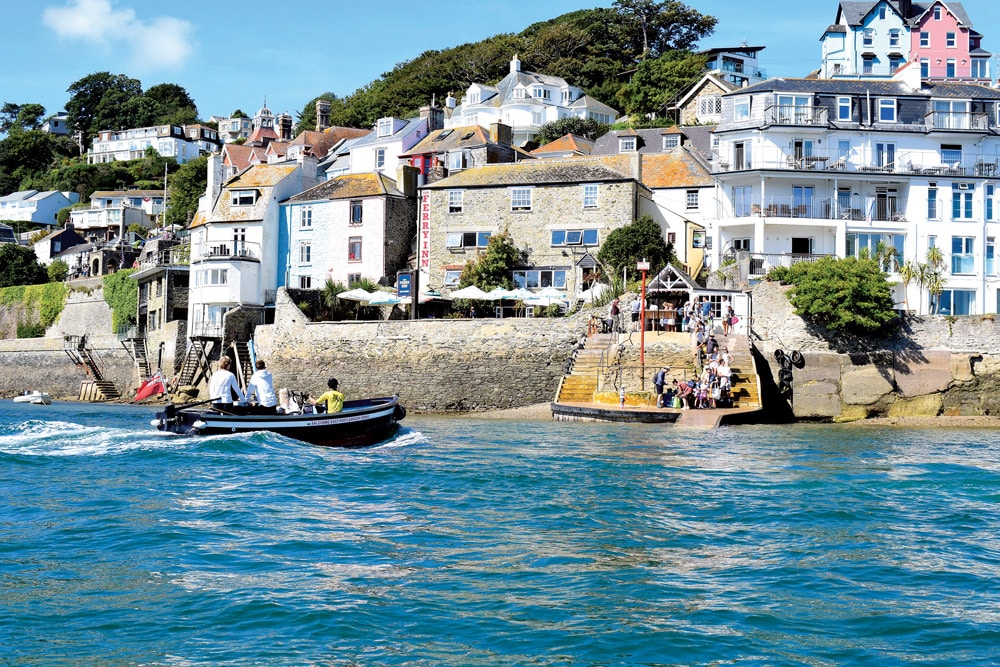
The town is refreshingly unspoiled, but this means likewise that it isn’t packed with facilities. Even so, there is a visitors’ dock where you can wash off and take on fresh water if staying for just half an hour at peak times. The harbour supplies a taxi service for all boaters on the water, which can be hailed on VHF Channel 12 between 08.00 and 23.00 in the season. Salcombe is also fortunate in that it has fuelling facilities in the form of a fuel barge moored in the middle of the estuary serving both petrol and diesel. The shower block in Whitestrand car park is basic, but plans are afoot to improve the situation as it is hoped to build a new shower and toilet block in 2023/24. Salcombe Yacht Club is also happy for visiting mariners to use their facilities in Cliff House. Salcombe does get extremely busy at the height of the season and rafting up is common, but as you may know, this is a great way to meet new people and, after all, it is part of the attraction of boating in the estuary.
Trailering welcomed
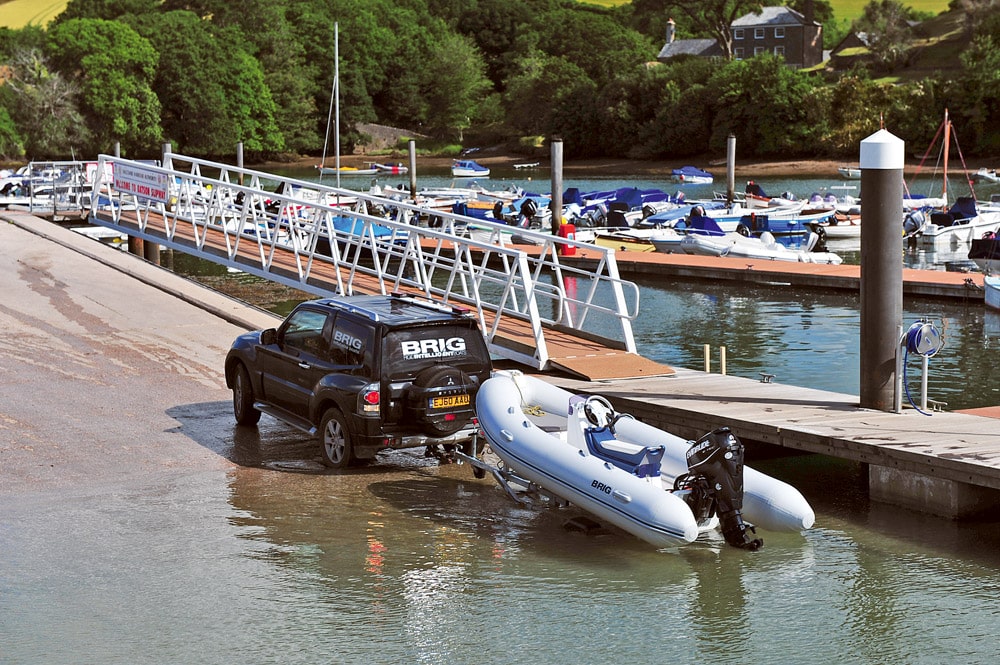
Easy launching on the slipway in Batson
Anybody who wants to trailer a RIB or powerboat will be met with good facilities in the town. Salcombe Harbour has invested in a very large slip in Batson, which is well organised and overseen by a member of the harbour staff. There is an office actually at the slip, and three or four boats, depending on size, can be launched and recovered at any one time. You can book trailer parking and a mooring on the water through the harbour office and its website. For peak times of the year, it’s recommended to even book as early as January. Once your boat is in the water you can park in the long-stay car park, leaving you free to use your boat during your stay, only needing to retrieve it when you’re leaving Salcombe. Fresh water is available at the slip, so washing your trailer down and flushing the engine through presents no problem here.
Should you need attention to your engine, all of the major manufacturers have affiliated service engineers in the town located in Island Street between Batson and the town centre, and also in Lincombe Boatyard. I would recommend using the long-stay car parks in Batson because upon arrival you’ll find you don’t really need your car; the beauty of Salcombe is that everything is on foot and within easy reach. Island Street traditionally has been the commercial hub of the town, while Fore Street is the retail and hospitality area. Uniquely, the beaches that flank the eastern shore opposite the town are easy to access via a foot ferry, and once you have alighted, they can be walked to, from one to the next, all the way up to the rocky outcrop adjacent to the bar and harbour mouth.
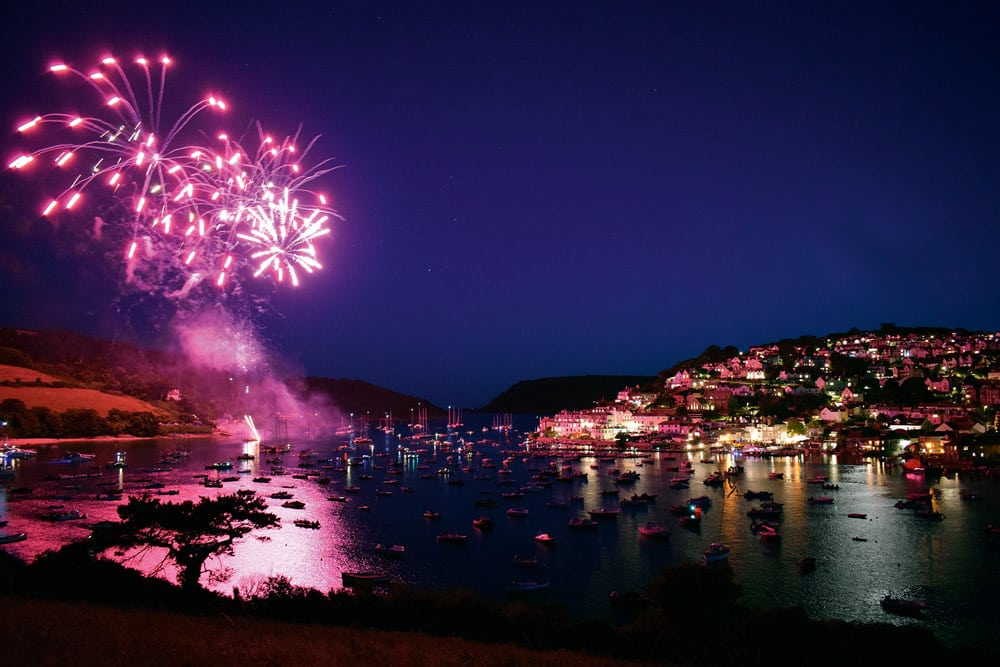
Salcombe Regatta in August ends with a bang! Watch it from the water, it`s amazing!
Safe haven
Salcombe Lifeboat Station has a rich heritage and has had its own lifeboat in the town since 1869. The town is now blessed with two boats, an all-weather Tamar class lifeboat and an Atlantic 85, the latter being the largest of the rigid inflatables in the RNLI’s fleet. It’s very well manned, and launch times in Salcombe are in fact some of the shortest in the country. Leading a friendly and informative harbour team, Cameron Sims-Stirling is the Second Coxswain aboard the lifeboat and also serves as the harbour master. His policy is that no boat should ever be turned away! The harbour staff work from 08:00 until 23:00 in the summer season and also have a security patrol through the early hours of the morning, which means there’s always somebody on the water to help you all year round. Their harbour guide is very informative too, and I very much recommend getting hold of a copy if you intend to stay in the harbour.
Exploring the many coves and beaches
Kingsbridge Creek is navigable for two and a half hours either side of high water, and the vibrant market town of Kingsbridge sits proudly at the head of the estuary. Boasting a supermarket, leisure centre and cinema, there are some wonderful farmers’ markets with an abundance of local produce on sale. The Crabshell Inn is a favourite haunt of boaters and has an excellent wall for mooring and a great restaurant and pizzeria. Before you reach Kingsbridge there are many creeks to explore, but beware of mud on falling tides as parts of the harbour dry at low water. Southpool Creek is especially popular in the summer as its Millbrook Inn has a jetty for mooring, and heading up there for fabulous food and local beers aboard your boat on a balmy summer’s evening is pretty special. But once again, watch your draught and get your timings right. The sandy beaches along the estuary become even more revealed at low tide and are truly perfect if you want to anchor off and picnic or use your tender to get ashore.
As you explore the estuary, make sure you look out for the lime kilns that dot the shore. These are ovens made from local stone that farmers used to bake and break down limestone that was brought in by sea in the 1800s. The lime was then spread on the fields to increase the PH balance of the soil and enhance their yield – a system that proved so successful that, rather than rent barges, the farmers actually began to build their own barges as their wealth and prosperity increased. The barges later gave way to schooners, and shipbuilding here became established as the Salcombe schooners sailed to the Azores to bring back the first of the season’s fresh fruit – and in winter salted cod from Newfoundland. Today, the iconic Salcombe yawl is still made in the town, and the fleet of yawls race every Saturday, with the famous Salcombe Regatta being the pinnacle of the racing season.
Family memories
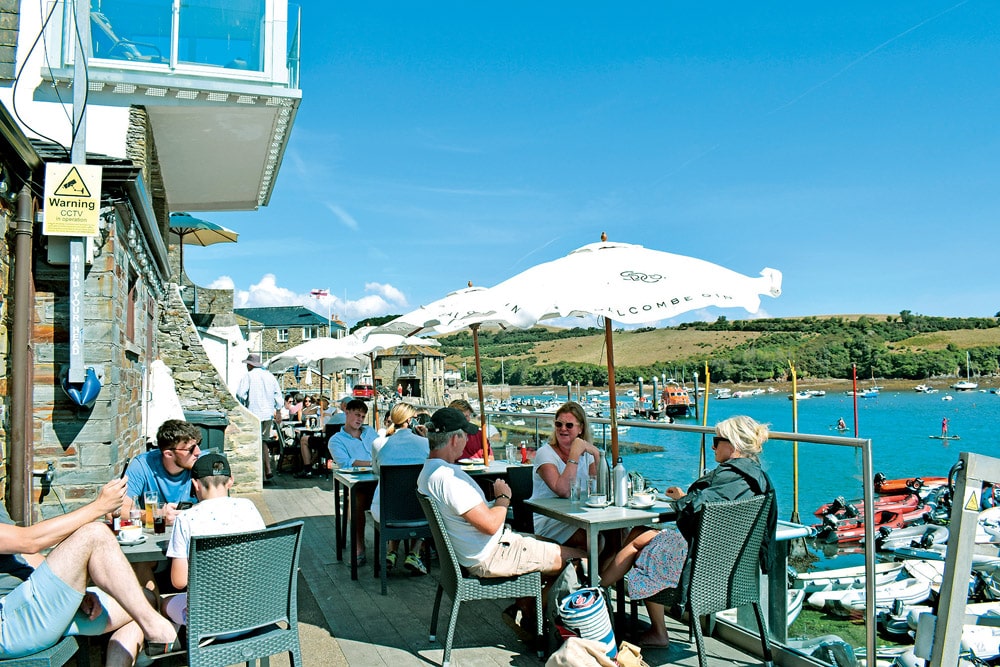
Lunch at the Wardroom overlooking the busy harbour
Sometimes the logistics of launching or cruising your boat into port can be a little daunting, and after all that effort, children can often appear underwhelmed, leaving you to wonder if all that effort was worthwhile! Years later, though, as I’ve found with my own family, it’s very gratifying to hear them reminisce about their amazing experiences on the water and remark how life-affirming those adventures were. These memories can be the glue that holds families together, and if there was any single place I’d recommend for on-water family adventure, Salcombe would feature at the very top of my list.
Cruising destinations
Dartmouth, 15nm
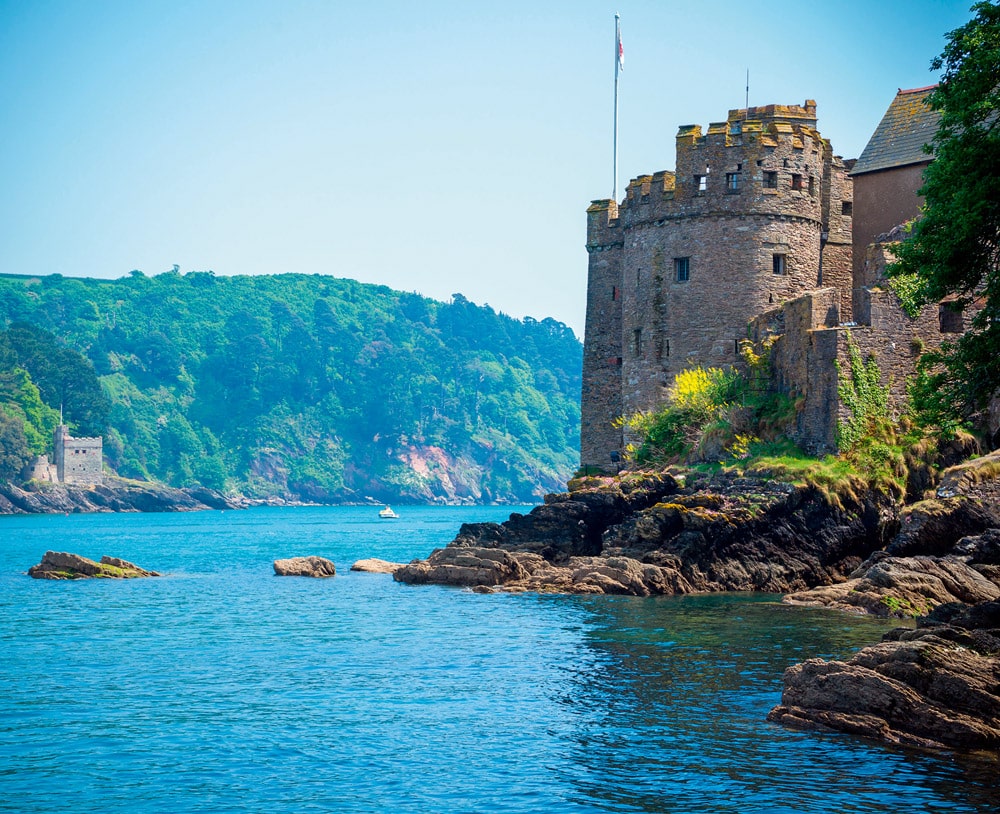
Explore Dartmouth Castle, which has guarded the harbour for over 700 years – a sheltered and very beautiful harbour with three marinas, visitors’ pontoons and anchorages.
Newton Ferrers, 17nm
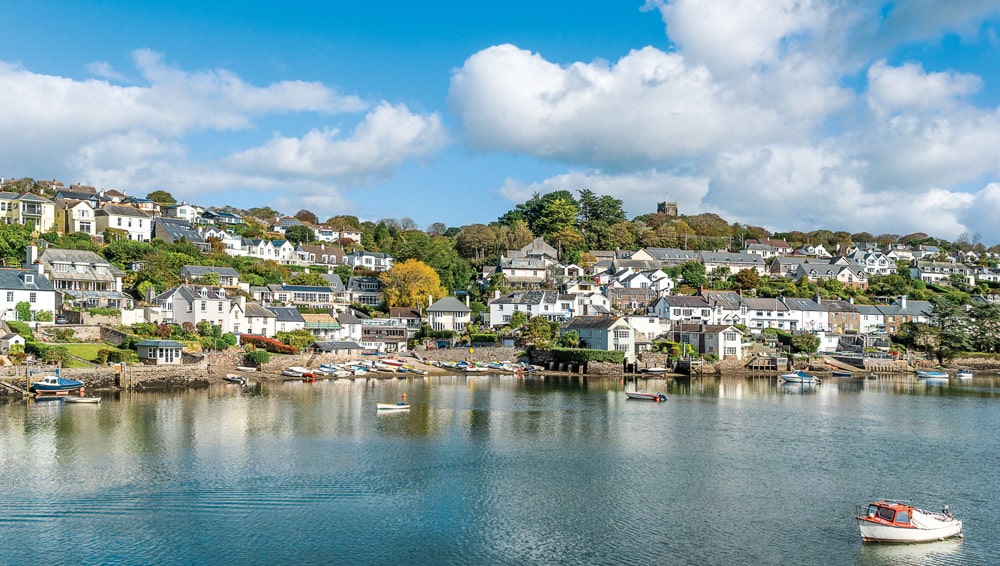
On the east side of the picturesque River Yealm, a perfect spot for a day trip; busy in summer months.
Plymouth, 19nm
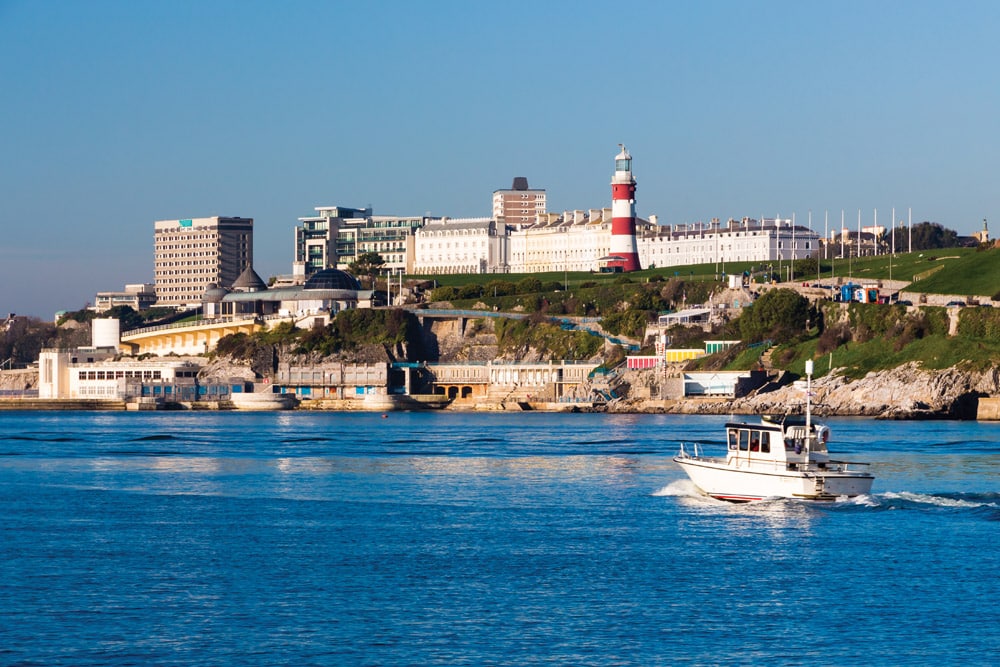
Lots to see and do in this all-weather, all-tide port served by numerous marinas, with many creeks and rivers to explore.
Fowey, 37nm
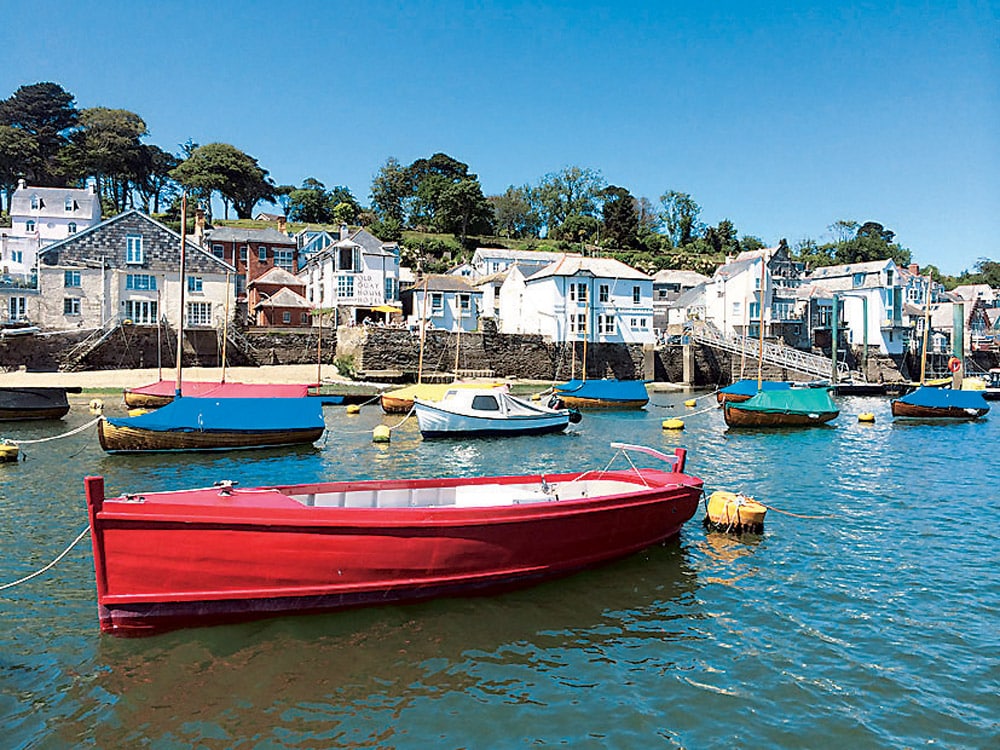
A pretty Cornish working port with visitors’ pontoons and swinging moorings, attractive shops and restaurants; marine services are available here and the tree-lined estuary is wonderful to explore.
Contacts
Harbour
- Harbour office: 01548 843791/VHF Channel 14 – 08:00 – 23:00 in the season
- www.salcombeharbour.co.uk
- Harbour taxi: VHF Channel 12 – 07807 643879
- Fuel barge: 07801 798862
- Tourist information www.salcombeinformation.co.uk
- Boat Store, Island St
- Coleman Butchers, Fore St
- Co-op Store, Gould Rd
- The Bakehouse, Fore St
- Fishy Business, Lifeboat Quay
Medical
- Redfern Health Centre: 01548 842284
- Urgent care: South Hams Hospital, Kingsbridge 01548 852349
5 Facts About Salcombe
- Salcombe has a permanent population of 2,500, which rises to 30,000 in the summer.
- Crab and lobster landed in Salcombe are exported all over the world, as far afield as China.
- Alfred, Lord Tennyson wrote ‘Crossing the Bar’ while staying at Sharpitor House (now Overbeck’s, a National Trust property).
- In 1764, the first holiday home, The Moult, was built in Salcombe.
- The area is a walkers’ heaven as the South-West Coastal Path runs along the estuary and up onto the stunning cliffs above the town.
‘Crossing the Bar’
 Alfred, Lord Tennyson, 1889
Alfred, Lord Tennyson, 1889
Sunset and evening star,
And one clear call for me!
And may there be no moaning of the bar,
When I put out to sea
For tho’ from out our bourne of Time and Place
The flood may bear me far,
I hope to see my Pilot face to face
When I have cross’d the bar

